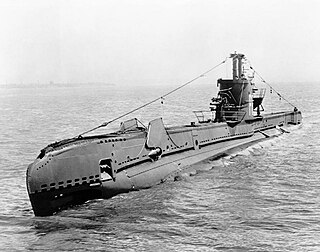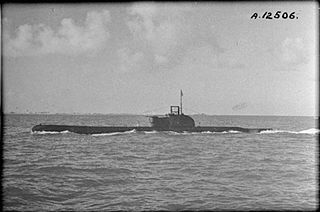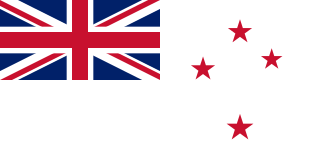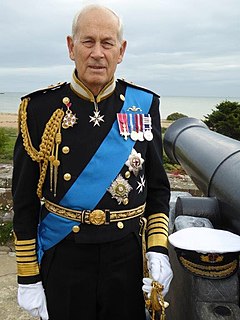
Admiral of the Fleet Michael Cecil Boyce, Baron Boyce, is a retired Royal Navy officer who now sits as a crossbench member of the House of Lords.

Ian Edward Fraser was an English diving pioneer and recipient of the Victoria Cross, the highest award for gallantry in the face of the enemy that can be awarded to British and Commonwealth forces. Fraser was born in Ealing in Middlesex and went to school in High Wycombe. After initially working on merchant ships and serving in the Royal Naval Reserve, he joined the Royal Navy at the start of the Second World War. After being awarded the Distinguished Service Cross for actions while serving on submarines, he was placed in command of a midget submarine during an attack in Singapore codenamed Operation Struggle. For his bravery in successfully navigating the mined waters, and successfully placing mines on a Japanese cruiser, Fraser was awarded the Victoria Cross.
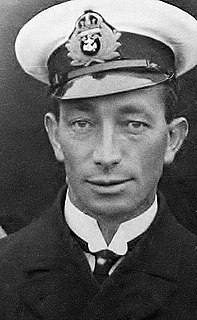
William Edward Sanders, was a New Zealand recipient of the Victoria Cross (VC), the highest award for gallantry "in the face of the enemy" that can be awarded to British and Commonwealth forces.

Admiral of the Fleet Roger John Brownlow Keyes, 1st Baron Keyes, was a Royal Navy officer. As a junior officer he served in a corvette operating from Zanzibar on slavery suppression missions. Early in the Boxer Rebellion, he led a mission to capture a flotilla of four Chinese destroyers moored to a wharf on the Peiho River. He was one of the first men to climb over the Peking walls, to break through to the besieged diplomatic legations and to free the legations.
Sir Gilbert Owen Stephenson KBE, CB, CMG, DL was a British Vice-Admiral in the Royal Navy, a pioneer of anti-submarine techniques in World War I, and most famous as an important Naval training commandant during World War II.

Admiral of the Fleet John David Elliott Fieldhouse, Baron Fieldhouse, was a Royal Navy officer. He commanded five submarines and a frigate before achieving higher command from the 1970s. Following the invasion of the Falkland Islands by Argentine forces in April 1982, Fieldhouse was appointed Commander of the Task Force given responsibility for "Operation Corporate", the mission to recover the Falkland Islands. The campaign ended in the surrender of Argentine forces in June 1982. He became First Sea Lord and Chief of Naval Staff in December that year and, in that role, persuaded the British Government to fund the replacement of ships lost in the Falklands War. He went on to be Chief of the Defence Staff from 1985 until his retirement in 1988.

Admiral of the Fleet Terence Thornton Lewin, Baron Lewin, was a Royal Navy officer. He served in the Second World War and then commanded a destroyer, the Royal yacht, two frigates and an aircraft carrier before achieving higher command. He was First Sea Lord and Chief of the Naval Staff in the late 1970s and in that role he worked hard to secure a decent wage for servicemen and helped win them a 32% pay rise. He went on to be Chief of the Defence Staff during the Falklands War, serving as chief war planner and as Prime Minister Margaret Thatcher's chief advisor during the war. He was also the first Chief of Defence Staff to act as head of the Armed Forces rather than just Chairman of the Chiefs of Staff Committee.

Admiral of the Fleet Sir Michael Patrick Pollock, was a senior officer in the Royal Navy who rose to become First Sea Lord and Chief of the Naval Staff in the early 1970s. In the Second World War, he was an officer on ships tasked with protecting convoys in the Atlantic and the Mediterranean, and was gunnery officer on the cruiser HMS Norfolk when she fought the German battleship Scharnhorst during the Battle of North Cape. He later commanded the aircraft carrier HMS Ark Royal, and hosted Ian Smith on HMS Tiger. In retirement, he held the position of King of Arms of the Order of the Bath and Gloucester King of Arms, with responsibility for heraldry in Wales.
Vice Admiral Sir John Michael Holland Cox, was a senior officer in the Royal Navy.

Admiral Sir John David Luce was a Royal Navy officer. He fought in the Second World War as a submarine commander before taking part in the Dieppe Raid and becoming Chief Staff Officer to the Naval Forces for the Normandy landings. He also commanded a cruiser during the Korean War. He served as First Sea Lord and Chief of the Naval Staff in the mid-1960s and in that role resigned from the Royal Navy along with Navy Minister Christopher Mayhew in March 1966 in protest over the decision by the Labour Secretary of State for Defence, Denis Healey, to cancel the CVA-01 aircraft carrier programme.

Admiral Sir Lionel Halsey, was a Royal Navy officer and courtier.

Vice Admiral Sir Peter Phipps, was a founding father of the Royal New Zealand Navy (RNZN). For heroism at Guadalcanal, the United States of America awarded him the Navy Cross, their second highest award for valour. Phipps was the first New Zealander to reach the rank of vice admiral in the RNZN. He was also served as Chief of Naval Staff and the first Chief of the New Zealand Defence Force.

Admiral Sir John Frederick Ernest Green was a Royal Navy officer of the late 19th and early 20th centuries. He saw service in the Boxer Rebellion, World War I, and the North Russia Intervention in the Russian Civil War. Late in his career, he became Commander-in-Chief, Coast of Scotland.

Captain George Edward Hunt, was a highly decorated Royal Navy submarine commander during the Second World War. While commanding HMS Ultor, he became the British submarine commander with the greatest number of sinkings of enemy vessels to his name, though David Wanklyn achieved sinkings of greater tonnage. Of the 68 torpedoes Hunt fired, 47% hit their targets.
Captain Harry Charles Birnie, was a Scottish sea captain and naval officer. His peacetime seafaring career was spent with the Cunard Line. He also served in the Royal Navy in both World Wars, being killed in action while in command of a merchant convoy in the North Atlantic in 1943.

Rear Admiral Benjamin Bryant was a Royal Navy officer noted for his submarine exploits during World War II. In terms of ships sunk, Bryant was the most successful British submarine ace to survive the war.. He was appointed Deputy Chief of Naval Personnel, (Training) from July 1954 to February 1957,

Rear Admiral John Robert Hamilton Clink, is a former Royal Navy officer who retired from the Royal Navy in 2018.
William James Lanyon Smith was a New Zealand naval officer. He served in the Royal New Zealand Naval Volunteer Reserve during World War II and was second-in-command of a midget submarine during an attack in Singapore codenamed Operation Struggle, for which he was appointed a Companion of the Distinguished Service Order.
Commander Norman Eyre Morley, was a British Naval Reserve officer who served in both World Wars, becoming the most decorated reserve officer in the Royal Navy, and the only person to have been awarded the Distinguished Service Cross four times.

